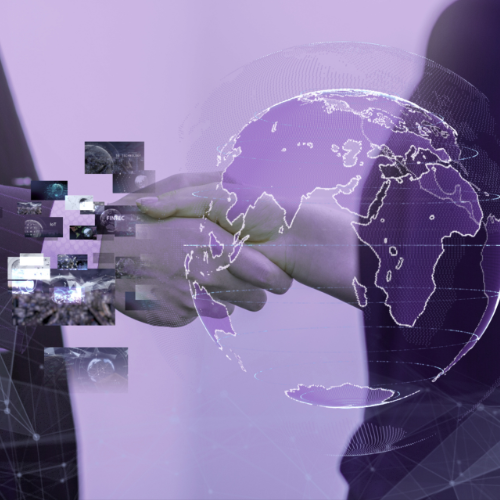A bot that chats has captured the public’s imagination in spectacular form. It’s clear from the headlines and hype that last November’s release of the ChatGPT prototype has been greeted with dread, hope, and abundant curiosity. In this blog, we’ll plunge into the subject of ChatGPT to explore what this technology is, how it can be used, and why it still falls short in replacing humans anytime soon.
But first, what is ChatGPT?

ChatGPT is a new iteration of text-to-text, generative AI technology that relies on the huge volumes of data available on the Internet through September 2021. Like other generative AI applications, ChatGPT uses machine learning algorithms to detect patterns in input data and develop new, original output. ChatGPT and its generative AI kin, such as DALL-E, are collectively capable of producing realistic graphics, music, and conversation.
Using natural language processing to transform input into conversational speech and fluid text, ChatGPT is especially adept at generating grammatically correct language that rings true to human conversation and writing. It is capable of responding to inquiries, passing exams, editing manuscripts, composing poetry, and even writing scripts of both the theatrical and technical variety.
What can ChatGPT do in the Workplace?
The creative potential of generative AI is far from limited to the artistic endeavors we associate with creativity. Given current and potential use cases, ChatGPT and generative AI in general will likely support various positions across fields and industries, such as:
- Healthcare – ChatGPT and other text-to-text AI applications can provide administrative support to physicians, relieving them from time-consuming tasks such as generating responses to insurance claims.
- Marketing – Marketing content generation is a prime candidate for ChatGPT’s intervention. In addition to creating copy, the bot can be useful for marketing functions including summarizing data, market analysis, and keyword research.
- Coding – ChatGPT has reportedly demonstrated that it has the rudimentary coding skills to qualify for an entry-level coding position at Google.
- Customer support – Many customer support professionals have already experienced chatbot colleagues in their departments. With improved versions of these tools, such as ChatGPT, chatbots are becoming better at responding appropriately and accurately to prompts and will likely assume increased responsibilities in assisting customers.
- Financial services – ChatGPT can be used for producing reports, detecting fraud, and facilitating investment analysis.
While these few examples of ChatGPT in the workforce may seem daunting, there are several realities that limit this technology. Here are some reasons humans should rest easy knowing that generative AI is not hurtling our species down the expressway to obsolescence:
-
Generative AI can support, rather than replace, human efforts.
Rather than replace people, generative AI can augment workforces in chronically understaffed industries. The healthcare industry, for example, faces a projected shortage of workers by 2030. In addition, these technologies can accelerate the valuable work of professionals across fields in novel ways, such as helping researchers fuel and speed drug discovery.

-
Generative AI remains fallible and vulnerable to misinformation, bias, and ethical lapses.
At the moment, ChatGPT, like other generative AI applications, remains prone to error, often producing inaccurate and inconsistent responses. Although OpenAI will no doubt improve the bot’s accuracy in its upcoming ChatGPT4, we are likely many years away from relying exclusively on AI-generated information. Concerns about overreliance on this tool in media outlets abound, including the increased risk of transgressions such as perpetuation of bias, plagiarism, propagation of misinformation, and dissemination of offensive content. Human oversight therefore remains essential to maintaining journalistic standards for ethics, accuracy, and quality. -
Humans can develop skills to thrive in the AI future.
Given all of this, how can we adapt? First, professionals in creative and non-creative fields can embrace new technologies as tools to improve their productivity and marketability. Learning how to make AI-enabled capabilities work for us can help us find inspiration in new sources, discover patterns we may otherwise have missed, and become more prolific. The World Economic Forum (WEC), which predicts that AI will spur job growth in the long run, counsels workers to develop the technical skills to leverage AI.
On the other hand, technology’s rising prominence in the workplace will also increase the need for us to nurture our most human attributes. The WEC also predicts that workers will need to engage in ongoing learning to prepare for new roles that will emerge alongside the rise of AI, many of which will require good interpersonal skills. Similarly anticipating an increased need for people skills, New York Times columnist David Brooks advises students preparing for the workforce to focus on cultivating empathy, presentation skills, and situational awareness.

-
Generative AI cannot simulate uniquely human attributes.
Perhaps the most important reality, and no doubt the most flattering, is that humans possess qualities that AI-driven technologies simply don’t. In his column, Brooks notes some of the feats only humans can accomplish, such as bringing distinct voices, empathy, unique views, situational awareness, and a sense of awe to their pursuits. Machine-generated knowledge cannot replace human wisdom, and the human capacity for understanding and adapting to context and capturing and communicating nuance cannot be replaced or simulated.
ChatGPT in the Workforce of Tomorrow
Both appealing and controversial, ChatGPT has transported us from the days when chatbots seemed nothing more than crudely anthropomorphized, endearingly clumsy tools. Dystopian images and bright visions for the future aside, ChatGPT is ultimately just a tool. Like other forms of generative AI, its presence will likely expand throughout workplaces and across industries. Fear not. With the right skills and the human knack for adaptability, we can use this technology to reach new heights and create a more productive future.

